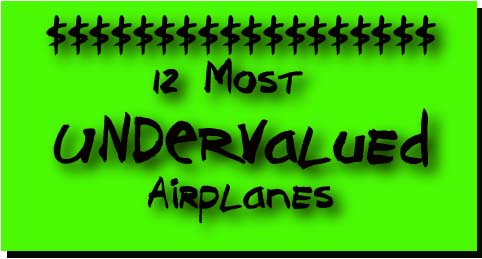

The Cessna 182 is absolutely the epitome in a personal airplane because it does everything well, but at a reasonable maintenance cost. However, late model airplanes (1980 and up) are rare as whale feathers and just as expensive. But, what about the earlier ones? Even the very earliest square tail 'Lanes aren't cheap but they don't choke your checkbook either. The Blue Book is $35,000 for 1956 models, which was the first year of production. Flash ahead 15 years to 1971 and the price tag is up to $57,000. Another 15 years and a 1986 Skylane, the last year they were produced before being reincarnated in an "improved" version, is a whopping $137,000. For that price you get a 142 knot airplane that carries 1300 pounds. Or you can spend $37,000 on a 1957 model and get a 141 knot airplane that carries 1100 pounds. Spend another $5,000 for a 1962 model and carry 1200 pounds at, you guessed it, 141 knots. What price progress, 1957 to 1986? About $100,000 per knot increase in speed and $500 per pound of useful load. Do older, good condition C-182's have a problem? Yes, a really big one...you almost can't find one because those who have them don't want to sell them. Now let's talk about Maule M-4's. The M-4's are visually different from the rest of the line in that they still have the original small, rounded tail, rather than the huge, swooping whale-tail of the M-5's (1974) and later. M-4's all started out as the Jetasen with the little 145 hp Continental, but then were built with a variety of engines of which the 220hp Franklin and the 210hp Continental are the most common, with the 180hp Franklin seldom seen. What makes the Maules so interesting is that here you have a four place airplane that, having started production in 1962, is relatively modern yet the highest price in the Blue Book for an M-4 is $33,000, with most hovering in the mid-$20k range. The little 145 hp airplanes don't top $20,000 and were built as late as 1967. Why are they all so inexpensive? This is an especially good question considering they all offer around 1000 pound useful load and adequate cruise numbers of 115-130 knots, depending on the engine. If anything, Maules suffer from a generation gap. Meaning, their cockpits feel like a 1949 Piper Clipper and are just a little tight and these days people seem to like larger, airy cockpits. Plus, M-4's have that most damning of all aviation value-killers (C-180's not withstanding), the tailwheel. Even worse, all of them have fabric covered tube fuselages and they didn't get all-metal wings until 1972. This kind of construction scares folks who are used to tin foil Spam Cans. Of course, all the things we just mentioned; tailwheel, rag and tube construction, "old" feeling cockpit are also exactly the same things that endear the Maule to it's huge following. What is a drawback to much of the market and lowers the airplane's value are the very same items that make the airplane such a value for the dollar. Here again, as with all bargain basement airplanes, the real drawback is the difficulty of finding a good one that someone is willing to sell.
For one thing, anyone capable of climbing into a 182 can fly it, they are so user friendly. A Twin Beech, on the other hand, needs a real pilot. And that pilot must come equipped with a limitless gasoline credit card. And he'd better own his own tools. Although dollar for dollar, the Twin Beech, will out perform most Barons in many categories (especially, considering the ability to carry as many as eight people), it's just not a shirt and tie kind of airplane. However for those who love tinkering. And class. And rolling up the gas pump knowing that a lot of eyes are on you, this be de bird. While you're pumping fuel into it just think of how much you aren't spending by not buying a 58TC Baron.
Another mark against the Viking is its narrower than normal cockpit and relatively small instrument panel. It takes some ingenuity to fit all the bells and whistles into the panel. But, does any of this matter, when its closest competition is the C-210 at nearly twice the price? It does to some folks, which is why the price is so low. We obviously have our own ideas of some undervalued airplanes. To expand on our thoughts, however, we decided to put the following question to several independent used airplane dealers we know. J. J. Johnson (Aerosport, St. Augustine, FL) and Barron Thomas (Barron Thomas Aircraft Sales, Scottsdale, AZ) were asked, "Name five airplanes you feel are undervalued." The first to pop out of Johnson's mouth was the Viking, so we weren't too far off base on that one. Right behind that was the Mooney 20 series going all the way back to the wooden wing, 150 hp M20A's. The little M20A was built for three years beginning in 1958 and its Blue Book value is under $20,000. This buys you a 150 knot-plus cruiser that carries 1000 pounds (but only 35 gallons of gas). The M20A is so cheap because of the wood wing. The M20B and later Mooney's all had metal wings and a 180 hp engine, but slightly less useful load. You have to go all the way up to the 1971 M20F before youfind a price over $50,000, and this includes the 200 hp airplanes as well. Why are they so reasonably priced? Mostly because they get much of their performance from small frontal area which means a relatively tight cabin.
|